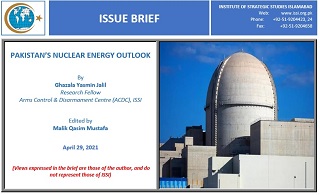In March 2021, the Pakistan Atomic Energy Commission (PAEC) announced that it had connected the Karachi Nuclear Power Plant KANUPP Unit-2 (K-2) with a 1,100MWe capacity to the national grid. The PAEC called it a ‘Pakistan Day’ gift to the nation. Pakistan Energy Minister, Omar Ayub Khan, said in a tweet that “By the Grace of Almighty Allah, Nuclear Power Plant K-2 synchronised successfully with the National Grid.”[1] This is certainly a step in the right direction for a country like Pakistan that has chronic energy deficit issues. Power generation through nuclear energy is important for Pakistan. However, the percentage of nuclear power in the total energy mix remains very small. It was 8.2% for the year 2020.[2] Other power generation sources in Pakistan are hydro, thermal, natural gas, coal, wind and solar. Nuclear power has the potential to contribute more to the national grid if it is invested in. For now, it is important to assess how many nuclear power plants Pakistan operates and has under construction, as well as its nuclear energy outlook in the coming decades.
© Design & Developed by RAR Multibiz Services Pvt. Ltd.















